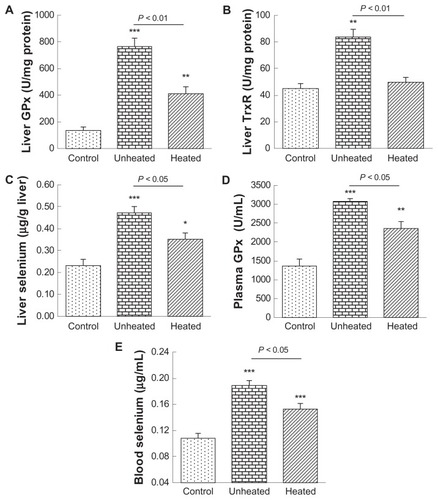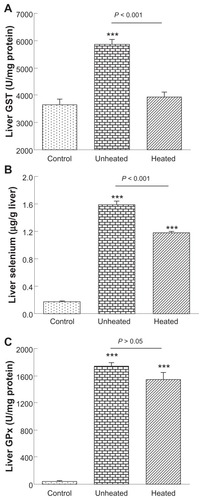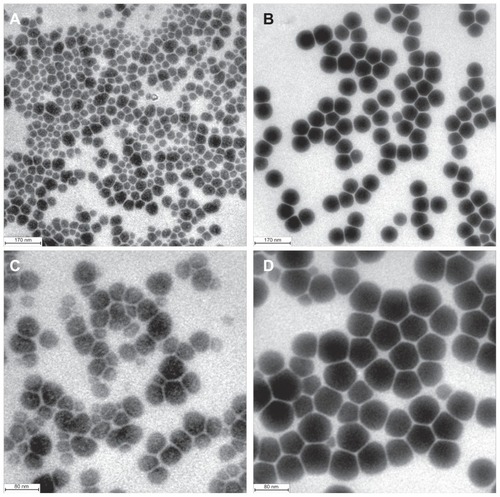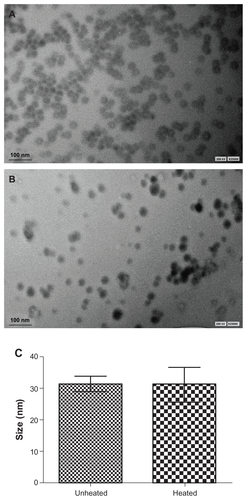Figures & data
Figure 1 Heat treatment changes the size and the structure of 80 nm selenium nanoparticles. (A) Unheated precursor selenium nanoparticles. (B) Precursor selenium nanoparticle solution after heating at 90°C for one hour.
Note: The bar in A and B represents 170 nm.

Figure 2 Heat treatment reduces bioavailability of 80 nm selenium nanoparticles at a nutritional level. Selenium-deficient mice were orally administered with saline as a control, or 80 nm selenium nanoparticles, either unheated or heated, at a selenium dose of 100 μg/kg for 7 days.
Notes Compared with the controls, *P < 0.05; **P < 0.01; ***P < 0.001.
Abbreviations: GPx, glutathione peroxidase; TxR, thioredoxin reductase.

Figure 3 Heat treatment reduces the bioactivity of 80 nm selenium nanoparticles at a supranutritional level. Selenium-deficient mice were orally administered with saline as a control, or 80 nm selenium nanoparticles, either unheated or heated, at selenium dose of 2000 μg/kg for 7 days.
Note: Compared with the controls, ***P < 0.001.
Abbreviations: GST, glutathione; GPx, glutathione peroxidase.

Figure 4 Heat treatment changes the morphology of 40 nm selenium nanoparticles. (A) and (C) Unheated precursor selenium nanoparticles. (B) and (D) Precursor selenium nanoparticle solution after heating at 90°C for one hour.
Note: The bar in A and B represents 170 nm, and in C and D represents 80 nm.

Table 1 Comparison of bioactivity of selenium nanoparticles with different sizes in vitro and in vivo at nutritional levels (small 5–15 nm, medium 20–60 nm, large 80–200 nm)
Table 2 Comparison of bioactivity of 36 nm and 90 nm selenium nanoparticles at supranutritional levels
Figure S1. Impact of heat treatment on size and structure of 31 nm selenium nanoparticles. (A) Unheated precursor selenium nanoparticles. (B) Precursor selenium nanoparticle solution after heating at 60°C for 40 minutes. (C) Size before and after heat treatment.
Note: Data are presented as the mean ± standard deviation (n = 70).
